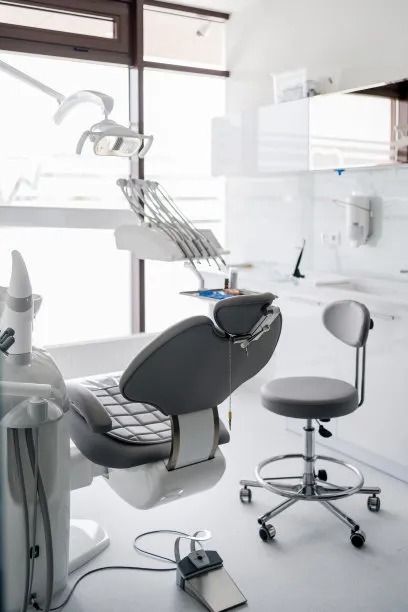Understanding the Process and Importance of Extracting a Tooth for Oral Health Maintenance and Future Dental Care
Summary: Extracting a tooth is often seen as a last resort when it comes to dental treatment, yet its importance in maintaining oral health cannot be overstated. This article explores the process of tooth extraction, its significance for overall health, and the implications for future dental care. Four key areas will be examined: the process of extraction, reasons for extraction, potential impacts on oral health, and post-extraction care. Understanding these facets equips patients with the knowledge needed to make informed decisions about their dental health, ensuring a healthier future. By acknowledging the critical role of tooth extraction in oral maintenance, individuals can better navigate their dental journeys and maintain a lasting smile.
1. The Process of Tooth Extraction

Tooth extraction is a surgical procedure performed by dentists to remove a tooth from its socket in the bone. The process begins with a comprehensive dental examination, where the dentist assesses the tooths condition and may take X-rays to determine its root structure and the surrounding bone. Understanding the anatomy of the tooth is crucial, as it helps predict potential complications during extraction.
Once the decision to extract is made, the patient is typically given a local anesthetic to numb the area around the tooth, making the procedure painless. In cases where multiple teeth need to be removed or the patient experiences anxiety, sedation options may also be available. After ensuring a pain-free environment, the dentist employs various tools to loosen the tooth before safely removing it from the socket, sometimes requiring sutures for proper healing.
Post-extraction, patients are advised on how to manage the discomfort and care for the extraction site. This includes recommendations for rest, oral hygiene, and dietary modifications to ensure optimal healing. Understanding the process allows patients to feel more at ease and prepared for what to expect during and after the extraction.
2. Reasons for Tooth Extraction
There are several reasons why a dentist may recommend tooth extraction, with the most common being tooth decay and periodontal disease. When a tooth is severely decayed and cannot be saved by a root canal treatment, extraction becomes necessary to prevent complications, including the spread of infection to adjacent teeth or the bloodstream.
Another prevalent reason for extraction is overcrowding. In orthodontic treatment, removing one or more teeth may be necessary to make space for proper alignment and bite correction. This proactive approach can lead to improved oral function and aesthetics.
Wisdom teeth, or third molars, often require extraction due to impaction, which occurs when these teeth do not have enough space to emerge properly. Impacted wisdom teeth can cause pain, swelling, and lead to infection, necessitating their removal to preserve overall dental health.
3. Impacts on Oral Health After Extraction
Tooth extraction can significantly impact oral health, both positively and negatively. On one hand, removing problematic teeth can alleviate pain and prevent the spread of infection, leading to improved comfort and health. This relief offers patients a renewed sense of well-being and encourages them to maintain better oral hygiene practices.
On the other hand, if a tooth is extracted, it leaves a void that can lead to shifting of surrounding teeth over time, which may affect bite alignment. This can complicate oral function and may necessitate further orthodontic treatment or restorative dentistry solutions like dental implants or bridges to fill the gap.
Moreover, loss of teeth can influence one’s self-confidence and overall quality of life. Therefore, understanding these potential impacts highlights the importance of seeking timely dental care and considering replacement options after extraction to maintain functional aesthetics and oral health.
4. Post-Extraction Care for Optimal Healing
After a tooth extraction, proper care is essential to promote healing and avoid complications. Initially, patients are advised to bite down on a gauze pad for about 30-45 minutes to control bleeding. Its normal to experience some swelling and discomfort, for which over-the-counter pain relief can be helpful, but patients are encouraged to follow their dentist’s specific aftercare instructions.
Maintaining good oral hygiene is crucial, but patients should avoid vigorous rinsing or brushing the extraction site for a few days to prevent dislodging the blood clot that forms in the socket. As healing progresses, gentle rinsing with a saltwater solution can aid in keeping the area clean.
Additionally, patients should avoid certain foods such as hot beverages, hard or chewy foods, and alcohol during the initial healing phase. Adequate hydration and a soft diet can greatly contribute to a smoother recovery process. Following the post-extraction care guidelines thoughtfully can pave the way for a successful healing period.
Summary:
Tooth extraction plays a critical role in maintaining oral health and facilitating future dental care. Understanding the detailed process of extraction, the reasons necessitating it, and the implications for oral health emphasizes its importance in a patient’s dental journey. Thorough post-extraction care further ensures optimal healing, which is essential for long-term oral health maintenance.
This article is compiled by Vickong Dental and the content is for reference only


